Pepper plants are notorious for frequently wilting leaves. Why is my pepper plant drooping? Don’t fret! This is common and usually nothing to worry about. In this article, we’ll discuss the possible reasons for your pepper plants wilting, and how to fix it!
Wilting Leaves (Video):
Dried Out Soil (Time to Water!)
By far the most common reason for pepper plants wilting is a lack of water. When plants become dry, the first sign will often be drooping leaves. This is especially noticeable in pepper plants.
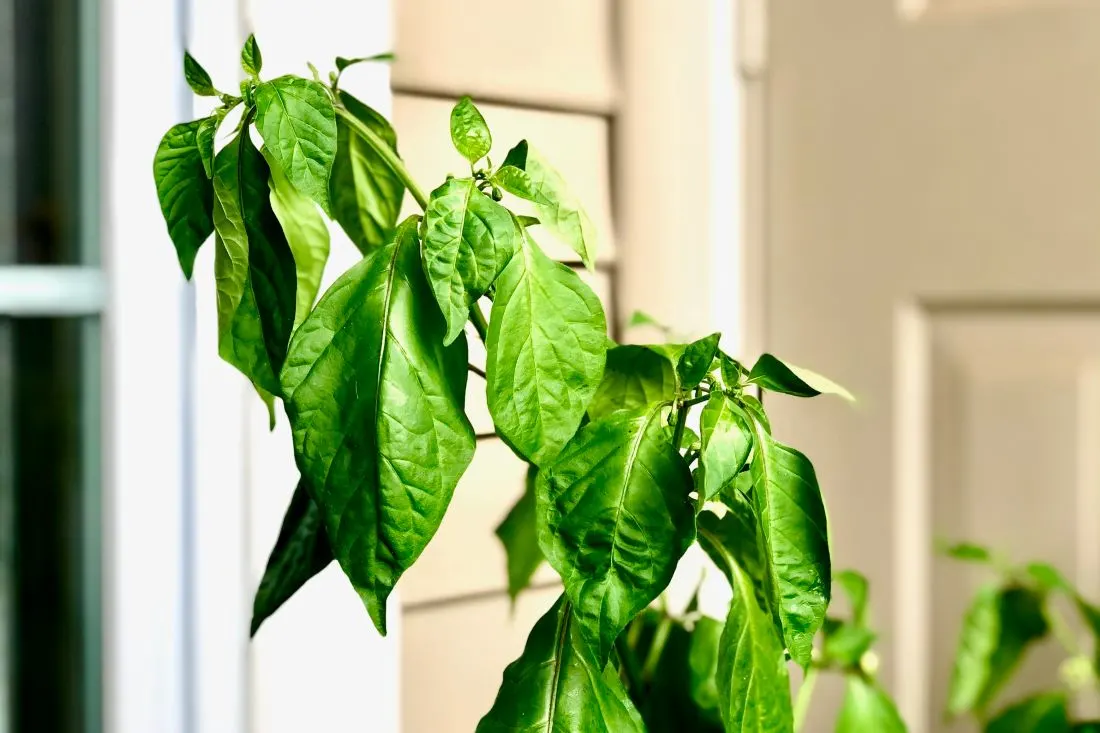
The reason leaves wilt when a plant is dry is simply a lack of available water within the plant. Through the process of transpiration, water is evaporated from the leaves of your pepper plants. If the plant is losing more water than it is taking in from the soil, the plant leaves will begin to droop. Environmental elements play a major role in how quickly a plant uses water.
While it isn’t ideal to allow your plants to wilt between watering, it is a clear sign that it is time to water. Give your peppers a good, deep watering, allowing any excess water to drain away.
If you want to keep better track of the soil’s moisture, try using a water meter like this one from Amazon. While not highly accurate, it can help you understand the moisture level deep below the surface of the soil.
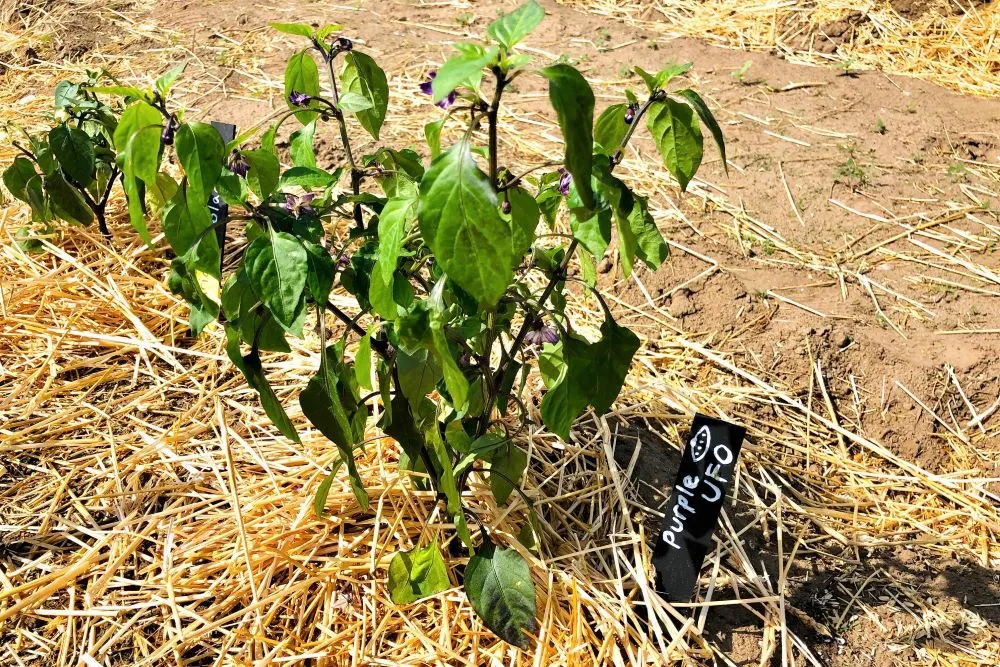
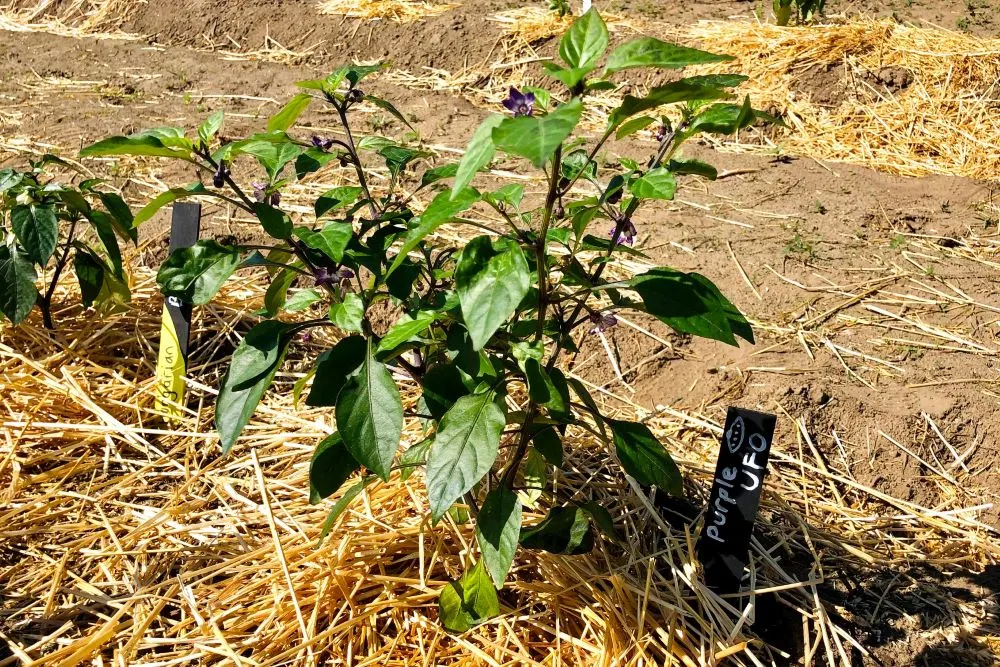
Tip: Many growers intentionally water stress plants during fruit production to achieve higher levels of spice in peppers.
Learn more about watering pepper plants in our detailed article here.
High Temperatures (Heat Stress)
Low water is not the only potential cause of pepper plants wilting. Overly intense heat, or heat stress, can cause significant leaf wilting.
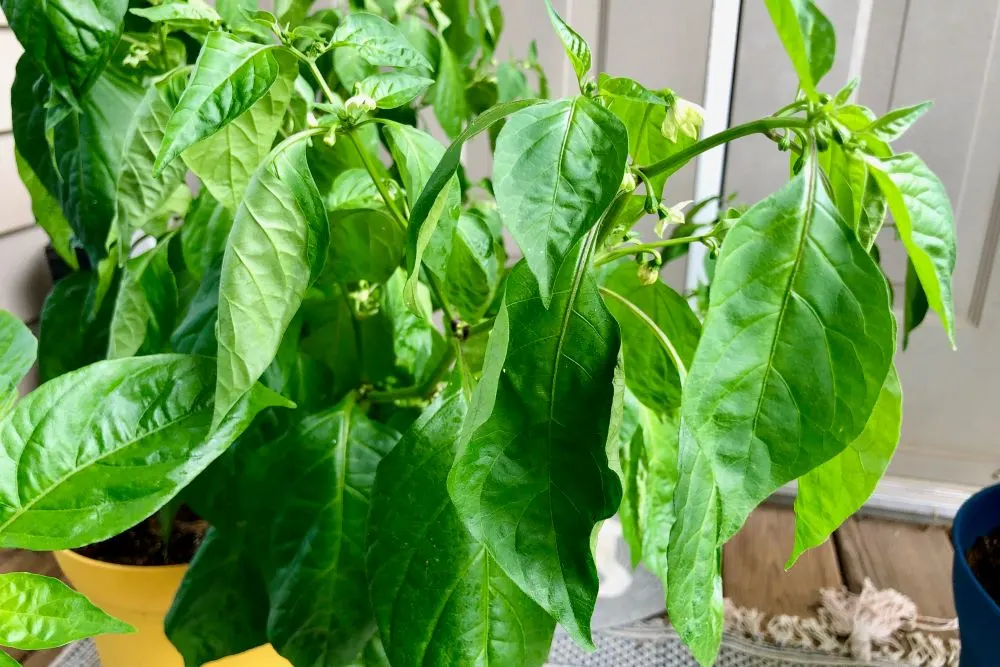
If the weather in your area is forecast to be over 90°F for a few days, expect to see some heat stress. Though peppers are known for thriving in warmer climates, they are still vulnerable to excess heat.
Here are a few tips to help peppers through a heat wave:
- Water. Without enough water, the effects of heat stress will be amplified. In hot and/or dry weather, pepper plants will use significantly more water. Keep the soil moist!
- Provide shade. The afternoon sunshine is the most intense, so if you can, provide some shade on extremely hot days. You can move potted plants to a shaded location, or provide some temporary shade with shade fabric for in-ground peppers.
- Avoid pruning. When your pepper plants are dealing with high temperatures, the last thing they want is physical trauma. Avoid pruning at this time. The plant may have difficulty taking in nutrients during a heat wave, too, so cut back on fertilizing when it is hot.
- Monitor temperature. Be prepared for a heat wave! Use a simple thermometer and keep it near your plants. We use a cheap clip-on thermometer for our plants. You can get a more attractive thermometer/hygrometer for outdoors.
Heat stress will cause wilting, but just know that your plants will rebound after the heat has subsided. Simply do your best to care for the plants while it is hot!
Transplant Shock
As peppers grow, they are typically transplanted into larger containers. When it is time for them to move from indoors to outdoors, they may experience some transplant shock.
If you have recently moved your pepper plants outdoors, it is possible that they are wilting due to the new conditions. Provide extra shade if necessary during the first couple of weeks after transplanting.
Be patient and allow the plants to adjust. Once the root system has acclimated, the plants should resume normal growth and stop drooping.
You may even see some some plants drop leaves if the transition outdoors is particularly drastic. Be sure to harden your peppers off properly by gradually introducing direct sunshine.
We have seen some of our pepper plants have a tough time coping with transplant shock, even with proper hardening off. The intensity of the sun is just that much more than any indoor grow lights. Be patient, and they will rebound!
Bacterial Wilt
If you are still having issues with your pepper plants wilting, it could possibly be due to bacterial wilt. While this condition isn’t all that common among home gardeners, it is possible.
Bacterial wilt is a soil-borne pathogen that can infect peppers and many other garden plants. It causes wilting and dying leaves, and is usually irreversible.
Take a look at some images of bacterial wilt here. This article also shows some ways to test for bacterial wilt.
Bacterial wilt also spreads from one plant to another. Remove suspected infected areas of the plant immediately and discard far from your garden, or burn them. If you are certain that your plants are infected, remove them from the garden entirely.
Prevention
The best way to prevent bacterial infections in peppers is to keep the leaves off of the soil. Remove any low leaves early on to keep the plant a few inches from the soil. Bottom pruning is easy and prevents any soil-borne diseased from entering through damaged leaves.
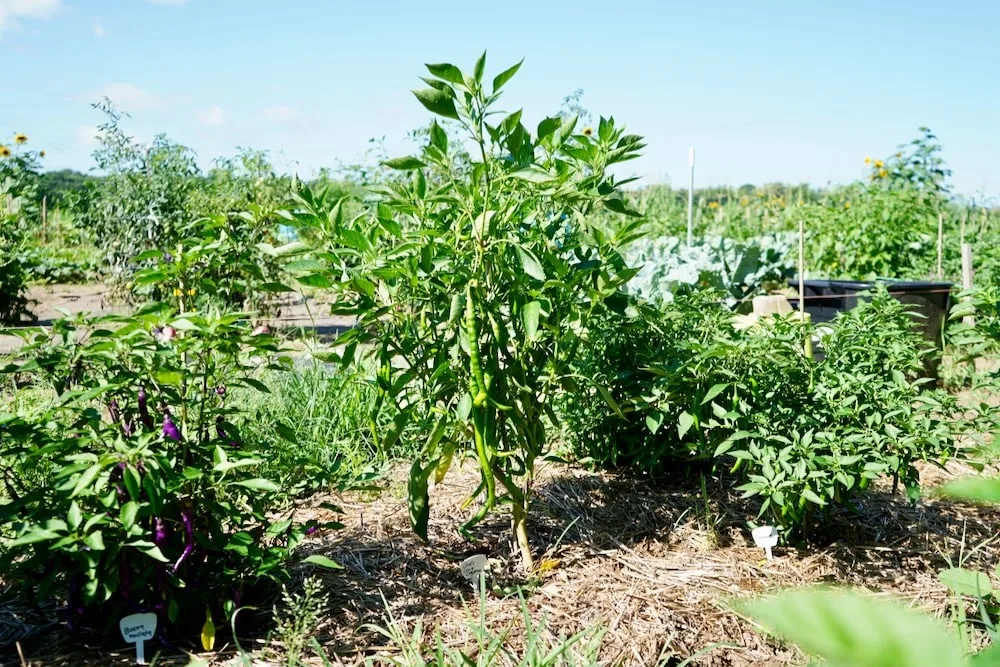
Another option is to mulch around the base of the pepper plant. This helps by preventing rain water from splashing soil onto the plant’s leaves. As a bonus, it can also help with water retention and weeds. We have liked using straw, shredded leaves, or wood mulch.
Be sure to try other solutions before giving up on your pepper plants. Wilting is usually caused by high temperatures and lack of water, so don’t jump straight to bacterial wilt!
Insects
Some insects can cause distorted or wilted-looking leaves in pepper plants. These include (but are not limited to) aphids, thrips, whiteflies, spider mites, and slugs.
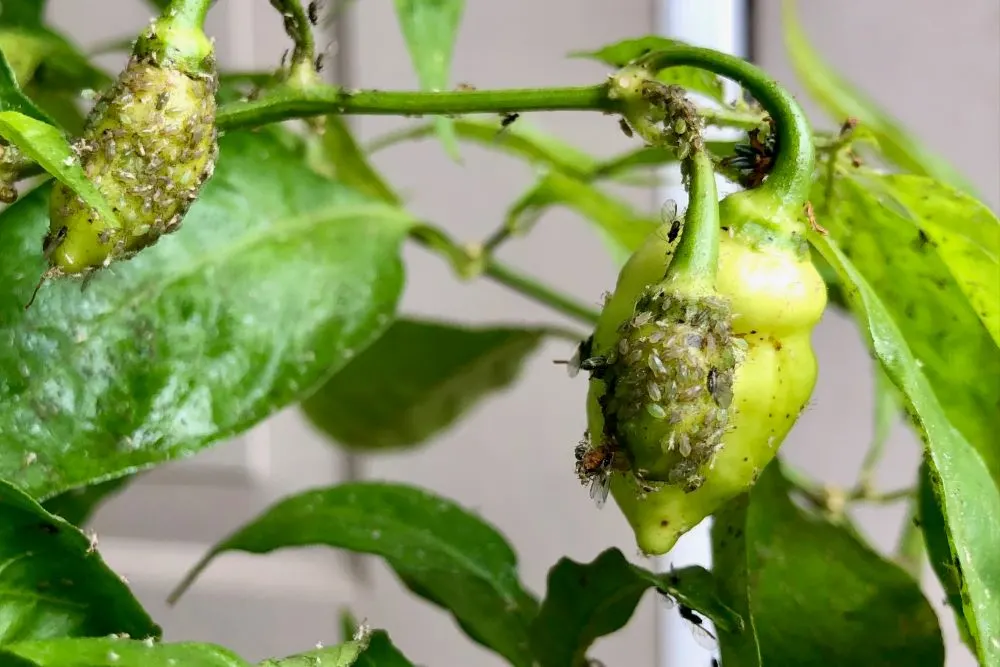
There will usually be noticeable damage to the leaves in addition to wilting or distortion. Look for any brown spots or holes in the leaves. If you suspect pest damage, check underneath leaves and on new leafy growth to spot them.
Solution
Planting alyssum has been a game changer in our garden, attracting a diversity of beneficial insects to eat the pests. Aphids can be particularly active in early spring, but it is usually best to wait for nature to take care of the problem for you.
If your pest problem is indoors, use a solution of neem oil, water and a mild soap in a spray bottle. During the evening, spray the leaves thoroughly, top and bottom. This can also be used as a preventative measure against soft-bodied pests.
You can also consider purchasing live beneficial insects, like green lacewings, into your garden. These can be expensive to source, but may be worth it depending on your situation.
Learn more about dealing with aphids on pepper plants here.
I hope this article helps you figure out why your peppers plants are wilting. The problem is usually an easy fix: Water thoroughly! If the problem persists, I hope you find the cause and still get a great harvest!


George
Wednesday 6th of December 2023
I should probably set up grow light again
George
Wednesday 6th of December 2023
I’m in upstate New York. I started some hot carribean peppers indoors on a heating mat in June. I purchased the fox farm trio you recommend. Then I put them under a grow light until they were big enough to transplant into 3 gallon pots. They were staring to flower just before I brought two plants in the house, while battling white flies and aphids with neem oil with limited results. The flowers wilted and fell off. No signs of fruit. Is there something I can do to make them flower again or do I just start again indoors in a couple of months?I appreciate your help. Thanks, George
Neil
Friday 13th of October 2023
I have a Carolina reaper that was fine until I picked the first pepper. Now the leaves are drooping. I have watered the plant but the leaves are still droopy. Is there something I can do?
Dan
Friday 6th of October 2023
I have 18 mature Bell Pepper plants in 5 gallon buckets, I grew from seeds, they began fruiting about a month ago. A few weeks ago I moved them indoors under grow lights. This Past week I notice many of the peppers have lost their sheen. About 1/2 of them are dull, some are still shiny and healthy looking. I am working on the height adjustment of the lights. Was wondering if you have any suggestions for dull, not shiny bell peppers. Thanks for what you do.
Joe
Tuesday 29th of August 2023
I found my pepper plants wilting, curling, with brown dried leaves. Most all the leaves on my shishito peppers are dying. Serrano leaves are starting to yellow out. I had applied a copper fungicide to all my plants including tomatoes, it was light on the peppers. Any suggestions?